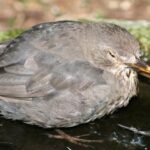Ashera
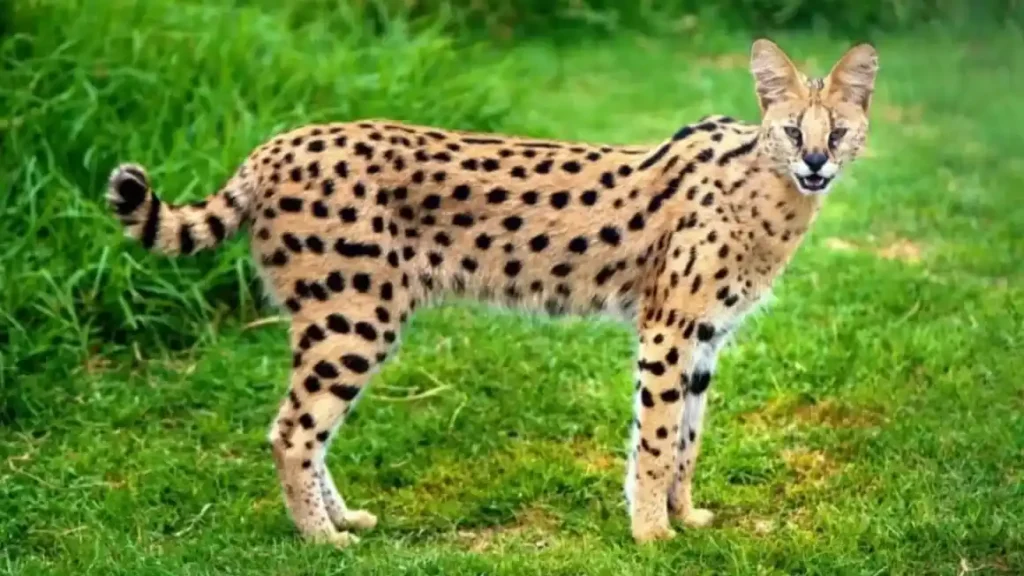
| Average Weight: | 26–33 pounds |
| Lifespan: | 25 years |
| Price: | Up to $125,000 |
Imagine a cat with the striking patterns of a leopard and the size of a small dog. Meet the Ashera, one of the world’s most exotic and expensive feline breeds. This hybrid cat is not just a pet but a statement of luxury and rarity.
Price and Rarity: Why the Ashera Costs a Fortune
The Ashera cat can command prices ranging from $15,000 to over $100,000. This breed is among the rarest in the world, partly due to the intricate and controlled breeding practices that combine genes from the African Serval, the Asian Leopard cat, and a domestic housecat. The limited number of Ashera cats produced each year further adds to its exclusivity and hefty price tag.
History and Origin: Engineered for Elegance
Developed by the U.S.-based company, Lifestyle Pets, the Ashera was designed to dazzle. Introduced in the early 2000s, this breed was engineered to possess the wild appearance of jungle cats while maintaining a temperament suitable for family life. Its creation was aimed at pet owners seeking a unique and luxurious companion.
Distinctive Features: A Blend of Wild and Tame
The Ashera stands out with its large, muscular build, striking coat patterns that mimic those of wild cats, and vibrant green or golden eyes. It’s not just the appearance that’s impressive—Asheras are known for their calm demeanor, intelligence, and affectionate nature, making them excellent, if unusual, house pets.
Care and Health: Special Needs for a Special Cat
Owning an Ashera comes with unique responsibilities. They require a diet high in protein and have specific grooming needs to maintain their hypoallergenic coat. Health-wise, while generally healthy, the hybrid nature of the Ashera can lead to specific genetic conditions that prospective owners should be aware of, emphasizing the need for regular veterinary check-ups.
Insurance Considerations: Protecting Your Investment
Given the Ashera’s value and potential health needs, securing pet insurance is crucial. However, owners might face challenges due to the breed’s exotic status and high purchase price, making some standard insurance policies inadequate. It’s advisable for owners to seek out specialized insurance options that cater to exotic pets to ensure comprehensive coverage.
Savannah
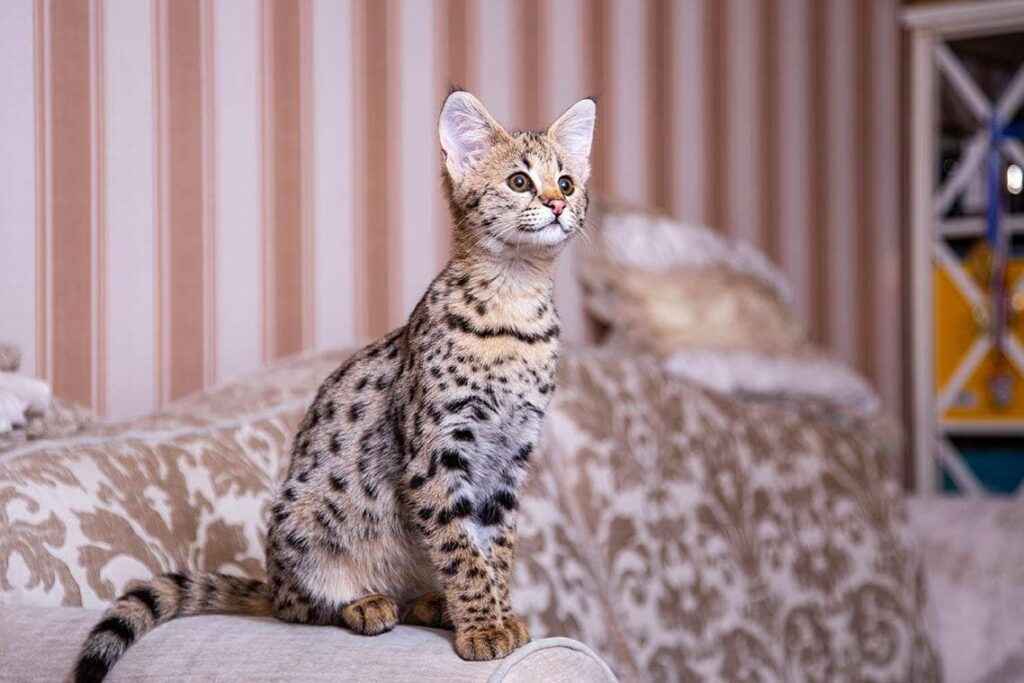
| Average Weight: | 12–25 pounds |
| Lifespan: | 20 years |
| Price: | $10,000–$50,000 |
Step into the world of the Savannah cat, a breed that captures the wild essence of the African serval with the familiarity of a domestic cat. Known for its remarkable size and vibrant personality, the Savannah cat is as much a companion as it is a spectacle.
Price and Rarity: A Pricey Feline Companion
Savannah cats are among the most expensive pets, with prices typically ranging from $1,000 to $20,000, but can soar up to $50,000 for the highest pedigree F1 individuals. Their steep price is due to their rarity, the complexity of breeding servals with domestic cats, and their classification into different filial generations indicating the percentage of wild genetics.
History and Origin: From the Wild to Your Home
The Savannah cat breed was first developed in the 1980s when a domestic cat was successfully bred with an African serval. This breed was created to give cat enthusiasts the best of both worlds: the striking appearance and impressive behaviors of a wild cat, coupled with the affectionate and social nature of a domestic cat.
Distinctive Features: Exotic Appearance and Dynamic Personality
Physically, Savannahs are known for their tall, slender bodies, large ears, and spotted coats, which closely resemble their wild ancestors. They are also incredibly agile and active. Personality-wise, Savannahs are curious, intelligent, and often display a loyal dog-like attachment to their owners, making them interactive pets.
Care and Health: Keeping Your Savannah Thriving
Savannah cats require a diet rich in protein and may need more space and exercise than the average domestic cat. Their health is generally robust, but like all hybrids, they can be prone to certain hereditary conditions. Regular vet visits and a stimulating environment are key to keeping a Savannah healthy and happy.
Insurance Considerations: Safeguarding Your Exotic Pet
Given the high cost and potential health risks associated with their exotic heritage, securing pet insurance for Savannah cats is essential. Owners should look for policies that cover both common and rare health issues specific to hybrid breeds, ensuring their investment is protected against unforeseen medical expenses.
Bengal
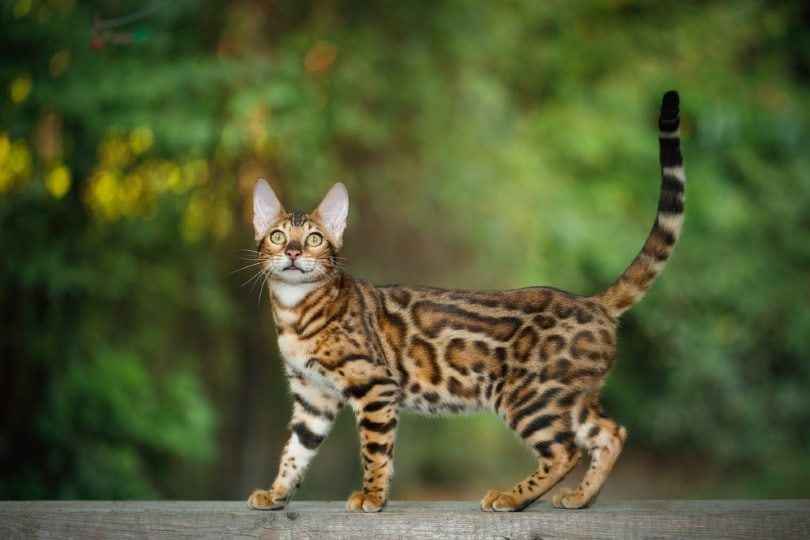
| Average Weight: | 8–22 pounds |
| Lifespan: | 12–16 years |
| Price: | $10,000–$25,000 |
The Bengal cat, with its striking wild appearance and playful personality, is more than just a pet; it’s a miniature jungle cat that you can call your own. Known for their glittering, leopard-like coat patterns and vibrant energy, Bengals offer a unique blend of exotic looks and friendly demeanor.
Price and Rarity: Exquisite but Expensive
Bengal cats are on the pricier side of domestic cat breeds, typically ranging from $1,000 to $5,000, though select breeds from distinguished bloodlines can cost upwards of $10,000. Their cost is justified by their rarity and the extensive and careful breeding required to maintain their distinctive wild traits while ensuring they are sociable and suitable for family life.
History and Origin: A Wild-Domestic Hybrid
The Bengal breed originated in the 1970s and 1980s when domestic cats were crossbred with the Asian Leopard Cat, a wild species native to South and East Asia. This crossbreeding was intended to capture the physical allure of the wild cat while diminishing the wilder temperament, making them suitable for home environments.
Distinctive Features: A Blend of Beauty and Agility
Bengals are immediately recognizable by their richly colored, highly contrasted coat of large spots or rosettes, similar to that of a leopard. Beyond their beauty, they are known for their high energy, intelligence, and playful behavior. They often love water, making for some unexpected and amusing interactions.
Care and Health: Meeting Their Needs
Caring for a Bengal cat involves providing plenty of physical and mental stimulation, as their energetic nature requires more engagement than many other breeds. They generally enjoy good health, but like all breeds, they can be prone to certain genetic conditions such as hypertrophic cardiomyopathy. A diet high in protein is also essential to mimic their natural dietary habits.
Insurance Considerations: Protecting Your Exotic Investment
Due to the Bengal’s cost and potential health issues, investing in comprehensive pet insurance is highly recommended. Prospective and current owners should look for insurance that offers coverage for both routine check-ups and the genetic conditions that are more prevalent in Bengals, ensuring these vibrant cats live longer, healthier lives.
Khao Manee
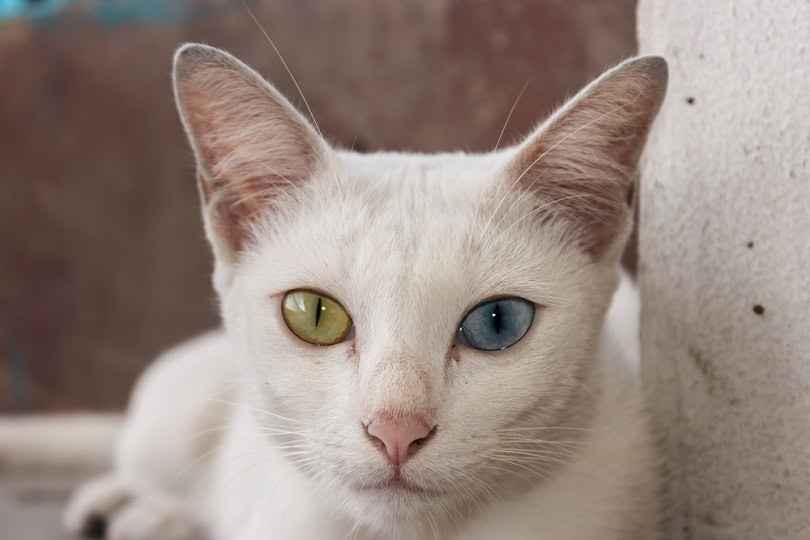
| Average Weight: | 8–10 pounds |
| Lifespan: | 10–12 years |
| Price: | $10,000–$11,000 |
Meet the Khao Manee, a rare gem from Thailand, known for its shimmering, snowy-white coat and striking, jewel-like eyes that often vary in color. Dubbed the “White Gem,” this breed combines ancient lineage with a mystical aura, making it a coveted companion among cat enthusiasts.
Price and Rarity: The Cost of Purity
Khao Manee cats are not only beautiful but also among the rarest, which reflects in their price—ranging from $1,000 to $11,000. Their rarity is attributed to their pure white coat and the genetic rarity of their odd-eyed characteristic. Historically reserved for royalty, the Khao Manee is still a treasure difficult to find outside Thailand.
History and Origin: Royal Roots
Originating from Thailand over hundreds of years ago, the Khao Manee was mentioned in the “Tamra Maew” (Cat Book Poems) as early as the 14th century. Historically, they were kept and bred by Thai royalty, which adds to their allure and exclusivity today. It wasn’t until the late 1990s that the breed began to gain recognition internationally.
Distinctive Features: A Spectacle of Colors
The most distinctive feature of the Khao Manee is its pure white coat, which contrasts sharply with its eye colors—ranging from blue, green, gold, or even one of each. This odd-eyed characteristic is both rare and highly prized. They are also known for their muscular build, strikingly angular facial structure, and communicative tail movements.
Care and Health: Keeping the Gem Polished
Khao Manee cats require regular grooming to keep their white coats clean and gleaming, though their short hair makes this a relatively easy task. They are generally healthy, but their genetic pool can predispose them to deafness, especially in individuals with two blue eyes. Regular health check-ups are essential to monitor for common feline ailments.
Insurance Considerations: Securing a Royal’s Health
Given their rarity and potential health issues, securing pet insurance for a Khao Manee is advisable. Owners should seek policies that cover genetic conditions and routine care, ensuring that these regal cats receive the care worthy of their royal heritage.
Sphynx
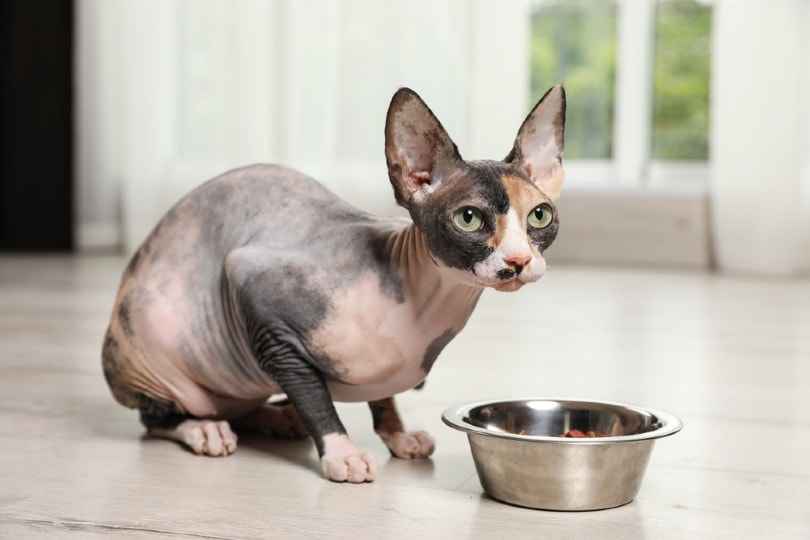
| Average Weight: | 6–12 pounds |
| Lifespan: | 8–14 years |
| Price: | $1,800–$9,800 |
The Sphynx cat, renowned for its hairless appearance and wrinkled skin, stands out in the feline world. Beyond its distinctive look, the Sphynx is cherished for its extroverted behavior, high energy, and affectionate nature, making it a favorite among those who cherish an interactive and outgoing pet.
Price and Rarity: A Price Reflective of Uniqueness
The cost of a Sphynx cat typically ranges from $1,500 to $3,000, but can go higher depending on lineage and breeder. This breed’s price tag reflects its rarity and the extensive care breeders must undertake to maintain the health and quality of these hairless wonders, including managing their body temperature and skin conditions.
History and Origin: An Unexpected Development
Originating in the 1960s in Canada from a random genetic mutation that caused hairlessness, the Sphynx was developed through selective breeding to enhance its unique traits. This breed is a perfect example of how a genetic quirk can be transformed into a desirable and exotic characteristic through careful breeding practices.
Distinctive Features: More Than Just Hairless
Apart from its obvious lack of fur, the Sphynx is known for its large ears, lemon-shaped eyes, and chamois-like skin which is warm and soft to the touch. Its appearance is often described as alien but appealing. This breed is also recognized for being highly sociable, often seeking out human attention and forming strong bonds with its owners.
Care and Health: Special Needs for a Special Cat
The Sphynx’s hairlessness means it requires specific care, including regular bathing to remove oils that would normally be absorbed by fur, and protection from extreme temperatures. They are generally healthy, but care must be taken to prevent skin issues such as infections or sunburn. Their diet also needs to manage their high metabolism.
Insurance Considerations: Essential for Exotic Pets
Insuring a Sphynx cat is important due to its potential health risks and the initial investment cost. Owners should look for comprehensive pet insurance that covers both common and breed-specific issues, such as skin problems and hereditary conditions, to ensure their pet’s well-being is safeguarded.
Persian
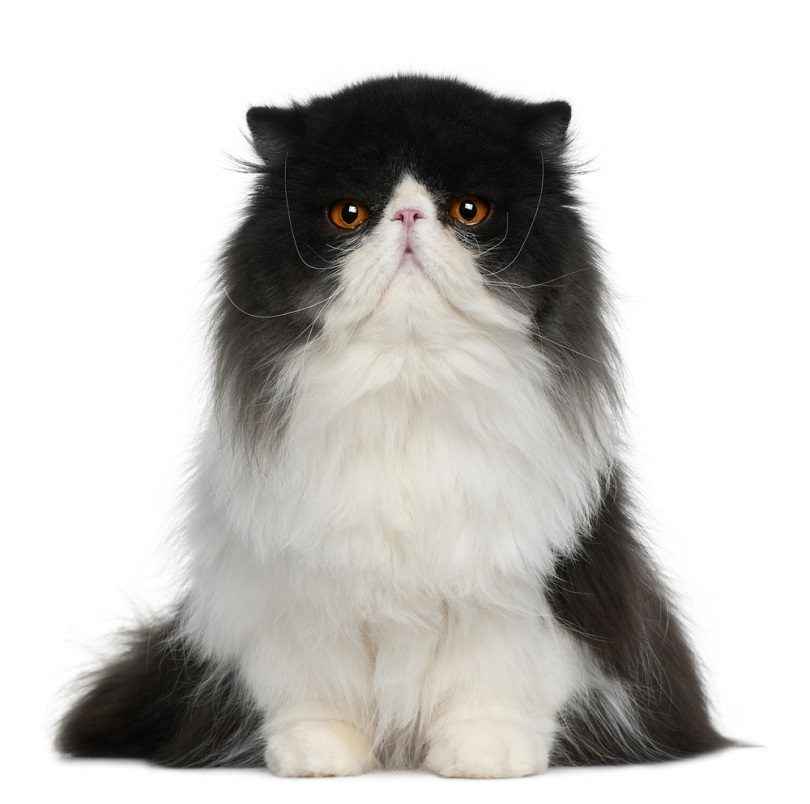
| Average Weight: | 7–12 pounds |
| Lifespan: | 10–17 years |
| Price: | $1,500–$5,500 |
The Persian cat, with its luxurious coat and dignified demeanor, epitomizes elegance in the feline world. Beloved for its long, flowing fur and sweet, gentle nature, the Persian is often seen as the epitome of a lap cat, offering beauty and companionship that has enchanted cat lovers for centuries.
Price and Rarity: Elegance at a Price
Persian cats are generally priced between $500 and $5,000, depending on their lineage, coat color, and breeder reputation. Their price reflects not only their popularity but also the intensive grooming needs and breeding standards required to maintain their distinctive appearance and health.
History and Origin: A Legacy of Luxury
Persian cats were first imported from Iran (formerly Persia) to Italy and France in the 1600s and later to England, where they were refined and popularized. They quickly became a fixture in royal and aristocratic households, their luxurious appearance symbolizing status and refined taste, contributing to their legacy as a cherished breed around the world.
Distinctive Features: A Study in Softness
Persians are characterized by their long, silky fur, broad, flat faces, and large, expressive eyes. Their coats come in an array of colors and patterns, each adding to their allure. Beyond their visual appeal, Persians are known for their calm and placid temperament, making them ideal house pets, especially in quieter environments.
Care and Health: Commitment to Grooming
The Persian’s thick coat requires daily grooming to prevent mats and tangles, and their facial structure demands regular cleaning to avoid tear staining and respiratory issues. Health-wise, they are prone to conditions like polycystic kidney disease and brachycephalic syndrome, making regular veterinary check-ups a necessity.
Insurance Considerations: Protecting Your Plush Companion
Given the Persian’s potential health issues and grooming needs, obtaining pet insurance is highly advisable. Owners should ensure that their policy covers breed-specific conditions and routine care, which can mitigate the high costs of maintaining a Persian’s health and appearance.
Toyger
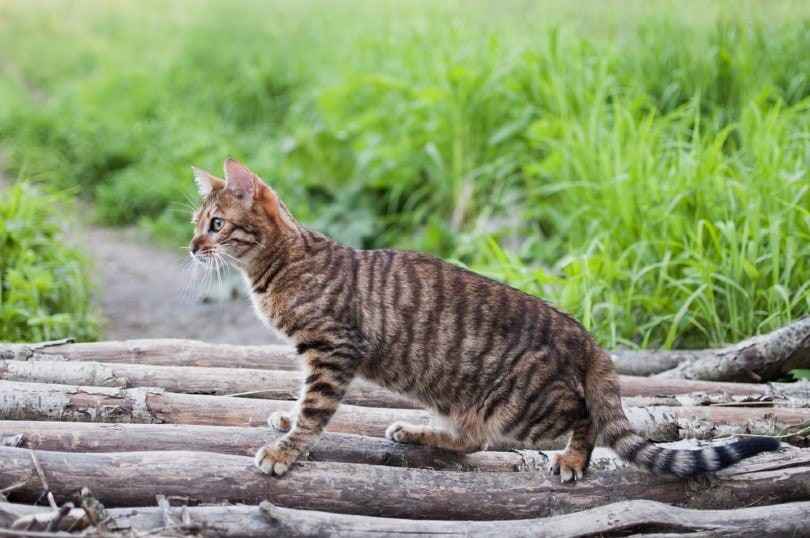
| Average Weight: | 7–15 pounds |
| Lifespan: | 13–17 years |
| Price: | $3,000–$5,000 |
The Toyger, with its striking tiger-like stripes and muscular build, is designed to resemble a miniature tiger in your living room. This breed is not just about appearance; Toygers are known for their friendly, outgoing personalities and their ability to adapt well to various living environments, making them perfect companions for families and singles alike.
Price and Rarity: The Cost of Exclusivity
Toyger cats typically range from $1,500 to $5,000. The higher price tag is a reflection of their rarity and the intricate breeding process required to achieve their distinctive tiger-like appearance. The breed is still relatively new and developing, which adds to its exclusivity and cost.
History and Origin: Engineered Elegance
The Toyger breed was developed in the late 1980s by Judy Sugden, with the goal of raising awareness for tiger conservation. By selectively breeding domestic cats that exhibited natural markings similar to those of a wild tiger, breeders aimed to create a cat that mirrored the beauty and majesty of a tiger in a manageable, domesticated form.
Distinctive Features: A Domestic Tiger
Toygers are medium-sized cats with short, thick coats that showcase bold, black stripes against a bright orange background. Their body is long and muscular, with high shoulders and a robust build that enhances their tiger-like appearance. This breed is also noted for its friendly and intelligent demeanor, often engaging in playful activities and learning tricks easily.
Care and Health: Maintaining the Tiger Look
Toygers are relatively easy to care for, requiring regular grooming to keep their coat in good condition. They are generally healthy, but like all breeds, they can be susceptible to genetic health issues such as heart problems. Regular veterinary visits are recommended to keep them in top health.
Insurance Considerations: Protecting Your Mini Tiger
Insurance for a Toyger is crucial due to their rarity and the potential for breed-specific health issues. Prospective owners should look for insurance plans that offer comprehensive coverage, including preventive care and treatment for common health conditions, ensuring their Toyger can enjoy a long and healthy life.
Peterbald
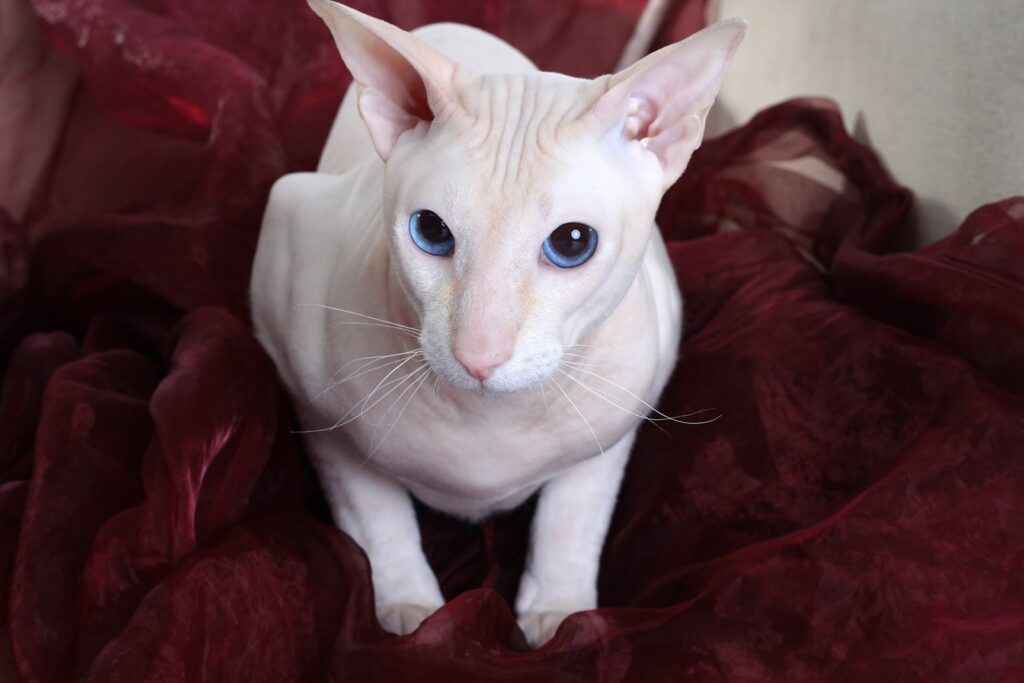
| Average Weight: | 8–10 pounds |
| Lifespan: | 12 years |
| Price: | $2,500–$5,000 |
The Peterbald cat, known for its distinctive hairless appearance and elegant physique, stands out as a unique breed in the world of felines. Originating from Russia, these cats are celebrated not only for their striking looks but also for their affectionate and social nature, making them excellent companions.
Price and Rarity: Rarity at a Premium
Peterbald cats generally range in price from $1,200 to $5,000, reflecting their rarity and the specialized breeding required to produce them. As a relatively new breed, developed in the 1990s, Peterbalds are still rare outside of Russia, adding to their exotic appeal and premium cost.
History and Origin: A Russian Innovation
The Peterbald breed was first developed in St. Petersburg, Russia, in 1994 through a planned breeding between a Don Sphynx and an Oriental Shorthair. This was done to create a breed with the hairless gene of the Don Sphynx and the elegant body type and personality traits of the Oriental Shorthair.
Distinctive Features: Sleek and Slender
Peterbalds are known for their hairlessness, though some are born with a fine down or even a full coat that may or may not be lost over time. They feature a slim, muscular build, almond-shaped eyes, and large, bat-like ears. Their skin is warm and soft to the touch, and they come in a variety of colors and patterns.
Care and Health: Special Care for Sensitive Skin
The care of a Peterbald involves protecting its sensitive skin from injuries, temperature extremes, and sunburn. Regular bathing is necessary to remove oil buildup on the skin, and a warm environment is essential to keep them comfortable. Health-wise, Peterbalds are generally hearty, but monitoring for skin issues is crucial.
Insurance Considerations: Safeguarding Your Investment
Given the rarity and potential health concerns associated with their unique skin and genetic makeup, securing pet insurance for a Peterbald is advisable. Prospective owners should look for policies that cover both routine and extraordinary health care, providing peace of mind for all possible health scenarios.





